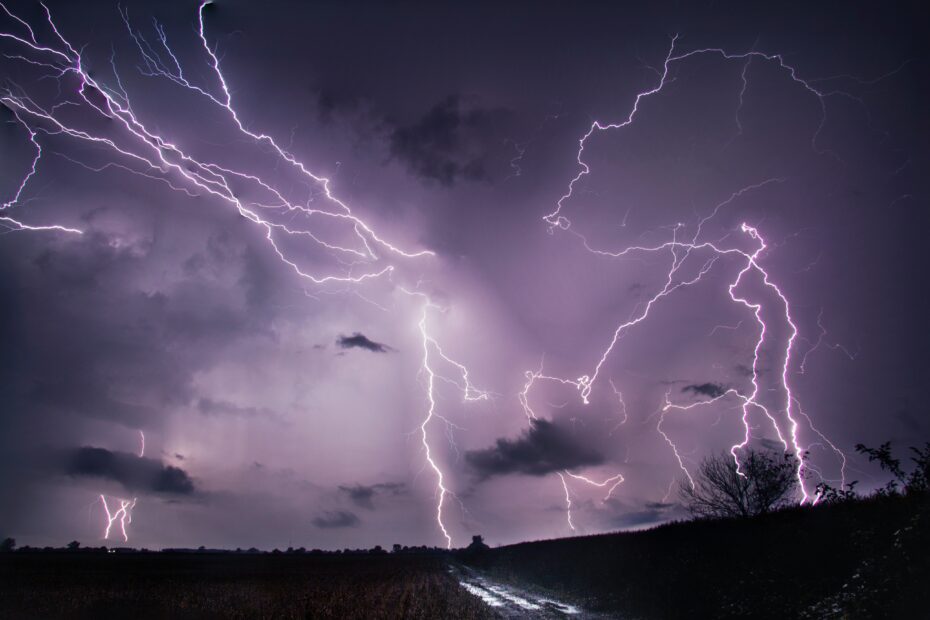Table of Contents
How Thunderstorms Form
Thunderstorms, or lightning storms are one of the most common weather phenomenon in the world. It is estimated that nearly 1,800 thunderstorms are in progress around the world, at any given time. Thunderstorms form when warm air rises quickly into the colder, higher levels of clouds. This unstable atmosphere creates rapid updrafts. The air lifted into the clouds, cools and moisture condenses. These storms can vary from mild to extremely damaging, with high winds, hail and even tornadoes.
Types of Thunderstorms
The National Weather Service has identified four types of thunderstorms.
- Single cell thunderstorms usually consist of a single thunderstorm with one central updraft. These are typical thunderstorms occurring during the hot temperatures of the summer. Single cell storms usual move quickly, dropping large amounts of rainfall.
- Multicell thunderstorms occur when single cell storms cluster or form lines of storms. These occur with strong cold fronts or along geographic weather boundaries like mountain ranges.
- Supercell thunderstorms are large, powerful updrafts, producing tornadoes with high winds, flash floods and large hailstones.
- Severe thunderstorms are defined by one or more of the following characteristics:
- hail with a diameter of ¾ inch or greater
- 58 mile per hour winds or greater
- tornadoes
What Causes Lightning
Lightning happens within a thunderstorm, transferring between clouds, called in-cloud lightning. The friction of moving air and water droplets within the thunderstorm creates electrical charges, both negative and positive. The differences in charge cause lightning.
Lightning strikes happen when the negative charge is large enough to cause a passage to the positively charged ground below. The negative charges group in the lower part of the cloud. These charges send out a feeler to the ground, called a stepped ladder, invisible to humans. The positive charges of the ground reach up. When these charges meet, a channel is made with a flash, as the visible lightning bolt strikes, usually composed of several short bursts.
Lightning happens in every thunderstorm, accompanied by a shock wave or series of bursts, which is commonly called thunder. The compressed air from the sudden heating around the lightning bolt causes this shock wave or series of surges.
How Close is the Lightning?
As light travels faster than sound, it is easy to calculate the distance to the lightning. As soon as the lightning appears, count the seconds until the thunder is heard. Divide this amount by 5. The number is the approximate distance in miles away from the lightning.
Where Severe Thunderstorms Occur
With satellite surveys of thunderstorms, meteorologists can observe and identify areas of the world with the most severe and frequent thunderstorms. A study by the American Meteorological Society in 2006, found the strongest storms to occur east of the Rocky Mountains in the United States and east of the Andes Mountains in Argentina, where geography plays are part in storm formation.
For more information on severe thunderstorm warnings and alerts, contact the National Weather Service.
